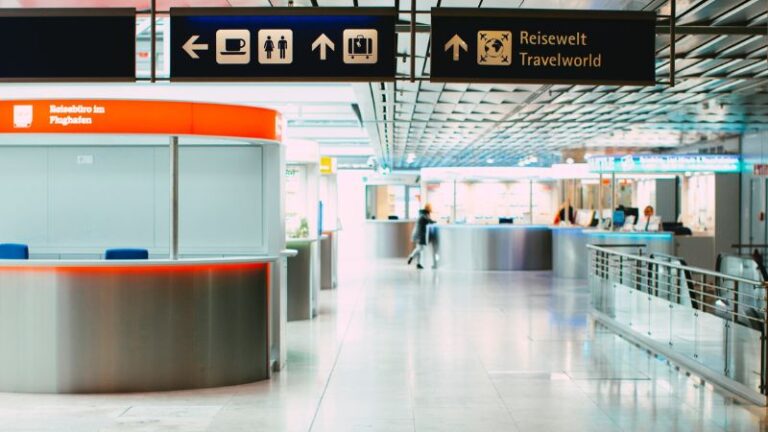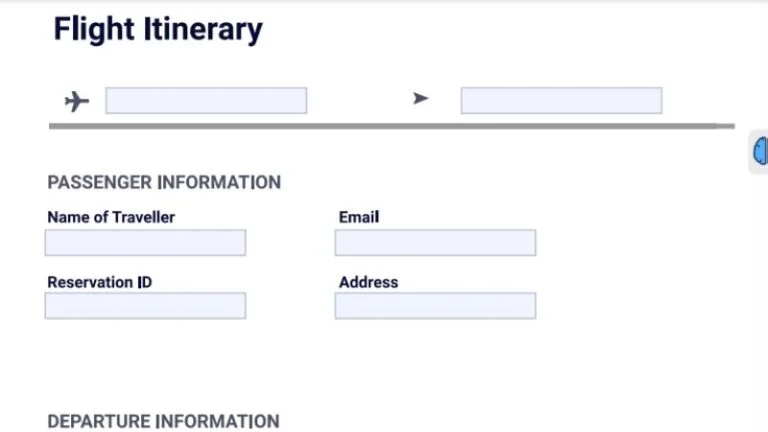Cash or Card: Navigating Currency in Australia

As participants in Amazon Associates and other programs, we earn from qualifying purchases. This comes at no additional cost to you. For more details, see our Affiliate Disclosure.
Whether you’re hopping between bustling cities or exploring Australia’s iconic outback, understanding the currency landscape is crucial for a smooth journey. In the land down under, both cash and cards have their own set of advantages, intricacies, and quirks. This article sheds light on navigating the choice between cash and card in Australia, ensuring you’re well-equipped for your adventures.
HIGHLIGHTS
- Australia is a global pioneer in the adoption of contactless payments, including innovations like Visa’s PayWave and MasterCard’s PayPass.
- Most major Australian banks eliminated withdrawal fees for customers of other banks in 2017. However, tourists using foreign cards might incur additional charges.
- Mobile wallets like Apple Pay, Google Pay, and Samsung Pay offer convenience and have gained significant traction in Australia.
- Tourists in Australia are advised to carry a mix of cash, credit/debit cards, and be vigilant against potential scams or fraudulent activities.
The Evolution of Currency in Australia
Australia’s financial journey, much like its rich history, is a blend of traditional roots and innovative strides. Before we delve into the present dynamics of cash and card in Australia, it’s essential to understand how the country’s currency landscape evolved over time.
Colonial Beginnings: Before the Australian dollar we know today, early settlers and convicts in Australia used British pounds, shillings, and pence. Due to shortages, they often bartered goods like rum instead of using coins.
Introduction of the Gold Sovereign: The Australian Gold Rushes of the 1850s saw an influx of gold. The Royal Mint in London gave permission to Sydney, Melbourne, and Perth to strike gold sovereigns and half sovereigns in the mid-1800s.
Birth of the Australian Pound: In 1910, the Australian pound, divided into 20 shillings (or 240 pence), replaced the variety of currencies previously in use, bringing more uniformity.
Decimalisation and the Birth of the Dollar: On 14 February 1966, a significant shift occurred. Australia decimalised its currency, replacing the pound with the Australian dollar. The dollar was divided into 100 smaller units called cents. This change aimed to simplify currency calculations and transactions.
Plastic Revolution: Australia has often been at the forefront of banking innovations. The country introduced the world’s first polymer banknote in 1988. This move was not just a nod to the future but was practical; polymer notes lasted longer and were more resistant to counterfeiting.
Digital and Contactless Movements: With the turn of the 21st century, Australia leaned heavily into digital banking and contactless payment methods. Innovations like “PayWave” and “PayPass” became popular, paving the way for a society where cashless transactions are now the norm.
Today, as Australia navigates a blend of traditional and futuristic currency methods, understanding this evolution provides invaluable insight. Whether one chooses to go cash or card, the roots of Australian currency remind us of a nation’s capacity to innovate and adapt.
The Pros and Cons of Using Cash
In an increasingly digital age, the role of tangible currency might seem to be diminishing. However, in Australia, as in many parts of the world, cash remains an essential mode of transaction for various reasons. Here’s a look at the pros and cons of using cash in the land down under:
Pros:
- Universal Acceptance: Cash is accepted almost everywhere, from bustling city centers to remote outback towns. Especially in places with limited connectivity, cash transactions can be more straightforward.
- Budget Control: Physically handling cash can make people more conscious of their spending habits. It’s easier to keep track of expenses and set daily or weekly spending limits.
- Privacy: Cash transactions provide anonymity, ensuring no digital trail of your purchases. For those who prioritize privacy, cash offers an added layer of discretion.
- No Additional Charges: Using cash eliminates the need to worry about international transaction fees or ATM withdrawal fees, which can be a boon for tourists.
- Immediate Transactions: With cash, payments are instant, with no need for approvals, pin entries, or potential technological hitches.
Cons:
- Security Concerns: Carrying large amounts of cash poses a security risk. In case of loss or theft, cash cannot be replaced, unlike blocked or lost cards.
- Inconvenience: For larger purchases, using cash can be cumbersome. It also means regularly visiting ATMs to ensure you have enough on hand.
- Lack of Rewards: Unlike many credit or debit cards, cash transactions don’t offer points, cashback, or other loyalty rewards.
- Potential for Incorrect Change: Human errors can occur when giving or receiving change, leading to minor financial discrepancies.
- Limited Record Keeping: Cash transactions don’t come with an automatic record or statement, making it harder to track spending over time or to provide proof of purchase.
While cash offers immediacy and wide acceptance, it also comes with its own set of challenges. For travelers and residents alike, a balance between cash and card often proves to be the most versatile approach in Australia.
The Rise of Digital Payments and Cards
Australia, with its forward-thinking approach to technology and banking, has emerged as a frontrunner in the adoption of digital payments and card usage. From the very first electronic funds transfer at point of sale (EFTPOS) to the more recent embrace of mobile payment apps, the landscape has shifted dramatically. Let’s delve into the rise and significance of digital payments and cards in Australia.
EFTPOS Revolution: Introduced in the 1980s, EFTPOS machines rapidly became a staple at retail checkouts across the country. They paved the way for debit and credit card payments, allowing consumers to enjoy a cashless shopping experience.
Contactless Payments: Brands like Visa’s PayWave and MasterCard’s PayPass introduced Australians to contactless payments. By simply tapping their cards, consumers could make quick, secure transactions, drastically reducing queues and wait times.
Mobile Wallets and Apps: With the ubiquity of smartphones, payment apps like Apple Pay, Google Pay, and Samsung Pay took root. These platforms allowed users to link their bank cards and use their phones for transactions, making physical cards optional.
Buy Now, Pay Later (BNPL) Services: Platforms such as Afterpay and Zip transformed retail shopping, offering consumers the flexibility to buy items and pay for them in installments without interest.
Banking and Peer-to-Peer Apps: Major banks in Australia developed their apps, enabling users to manage accounts, transfer money, and even pay bills on-the-go. Furthermore, apps like Beem It made peer-to-peer money transfers instantaneous.
Enhanced Security: With concerns about digital fraud, there was an industry-wide push for better security. Features like tokenization, biometric verification, and two-factor authentication became standard, ensuring user trust.
Consumer Behavior and Preferences: The convenience, speed, and rewards associated with card and digital payments led many Australians to prefer these methods over cash. A shift in mindset, driven in part by younger, tech-savvy generations, further fueled the digital payment trend.
Government and Institutional Support: The Australian government and financial institutions have actively supported the transition to a cashless society. Infrastructure developments, regulatory frameworks, and promotional campaigns encouraged businesses and consumers to adopt digital methods.
While the rise of digital payments and cards presents numerous advantages, it also calls for increased awareness about cybersecurity and financial management. As Australia continues on this trajectory, staying informed and vigilant becomes paramount.
Navigating ATM Fees and Charges
Using ATMs (Automated Teller Machines) can be a breeze, but understanding the associated fees is crucial to avoid any unpleasant surprises on your bank statement. In Australia, ATMs have undergone significant changes in terms of fee structures in recent years. Here’s what you need to know:
- Domestic Bank ATMs: Most of Australia’s major banks, such as Commonwealth Bank, Westpac, ANZ, and NAB, decided in 2017 to eliminate withdrawal fees for customers of other banks. This means that regardless of your bank, you can use these ATMs without incurring a fee.
- Independent ATMs: Machines not affiliated with major banks might still charge fees. These are often found in convenience stores, pubs, or clubs. Before confirming a transaction, these ATMs should disclose any associated fees, allowing you to accept or decline.
- International Fees: Tourists and those using foreign bank cards should be particularly mindful. In addition to potential local ATM fees, your home bank may charge you for international ATM withdrawals. This can include both flat fees and currency conversion charges.
- ATM Balance Inquiry: Some ATMs may charge a fee just for checking your account balance. It’s often more cost-effective to check your balance through a mobile banking app or online.
- Cash Advance Charges: If you’re using a credit card at an ATM, you might be subject to cash advance fees. These are typically higher than regular ATM fees and also accrue interest at a rate different from your card’s standard rate.
- Limitations on Free Withdrawals: While many banks have scrapped ATM fees, they might still have limitations on the number of free withdrawals allowed per month, particularly with certain account types.
- Location-Based Fees: ATMs in places with high foot traffic or tourist spots might have higher fees. Airports, for instance, can be notorious for this.
Tips to Minimize Fees
- Plan Ahead: If you know you’ll need cash, withdraw larger amounts less frequently to reduce the number of transactions and potential fees.
- Use Bank Apps: Many banking apps have features that direct you to the nearest fee-free ATM.
- Inquire with your Bank: If you’re planning to travel or use your card abroad, reach out to your bank to understand any fees you might face.
In conclusion, while Australia has made significant strides in reducing ATM fees, it’s essential to remain aware and informed. By understanding the potential charges and being strategic with your ATM usage, you can save money and avoid unexpected expenses.
The Popularity of Contactless Payments
Australia has been a global pioneer in the adoption of contactless payments. The convenience of a simple tap for transactions, without the need for a pin or signature, has resonated with the fast-paced lifestyle of Australians. Brands like Visa’s PayWave and MasterCard’s PayPass played pivotal roles in introducing this technology, making transactions quicker and reducing queue times significantly.
Furthermore, the technology behind contactless payments is not limited to just cards. With the ubiquity of smartphones and wearables, mobile wallets like Apple Pay, Google Pay, and Samsung Pay have gained immense traction. These platforms allow users to link their cards and make payments using their devices, offering an added layer of convenience.
Safety and security concerns have always been at the forefront of any new payment method. Contactless payments, however, have robust security features, including tokenization, which replaces sensitive card details with unique codes for each transaction. This ensures that even if there were a breach, the data intercepted would be of no use.
One unexpected driver of contactless payment adoption was the global pandemic. As the world became more health-conscious, the preference for touch-free transactions skyrocketed. Both businesses and consumers saw contactless payments as a hygienic alternative to cash or traditional card payments.
Traveler’s Tips: Best Practices for Tourists
Traveling to Australia promises an exhilarating blend of natural beauty, urban sophistication, and rich culture. However, to ensure a seamless experience, especially in financial matters, here are some best practices for tourists:
Know the Currency: Familiarize yourself with the Australian dollar (AUD) and its denominations. Coins come in 5, 10, 20, 50 cents, and 1 and 2 dollar denominations, while notes are available in 5, 10, 20, 50, and 100 dollars.
Carry Multiple Payment Options: While Australia has a robust digital payment system, it’s advisable to carry a mix of cash, credit/debit cards, and even a travel money card. This ensures you’re prepared for all situations.
Alert Your Home Bank: Inform your bank about your travel dates and destination. This can prevent your cards from being flagged or blocked due to unusual overseas activity.
Understand ATM Usage: Most major Australian banks don’t charge fees for domestic ATM withdrawals. However, if using a foreign card, you might incur charges from both the local and home bank.
Opt for Contactless: Australia is a leader in contactless payment technology. It’s fast, secure, and widely accepted. So, if your card supports it, make use of the tap-and-go feature.
Stay Updated on Exchange Rates: Exchange rates can fluctuate. It’s beneficial to have a currency conversion app or check rates online regularly. This helps in making informed spending decisions.
Keep Receipts: Retain receipts of major purchases or transactions. Not only is this helpful for warranty or return purposes, but some tourists may also be eligible for a GST refund upon departure under the Tourist Refund Scheme.
Avoid Dynamic Currency Conversion: Some merchants might offer to convert your transaction to your home currency at the point of sale. While this sounds convenient, the exchange rate provided can often be unfavorable. It’s usually better to opt for local currency billing.
Stay Vigilant Against Scams: As with any travel destination, remain cautious of potential scams or fraudulent activities. Regularly check your transaction history and report any discrepancies immediately.
Budget Accordingly: Australia is a vast country with varied experiences. Research and plan your activities, keeping in mind potential expenses like entrance fees, guided tours, or local transport.
Equipped with these tips, tourists can confidently navigate Australia’s financial landscape, focusing more on the beauty and adventures the nation has to offer.






